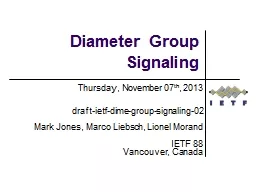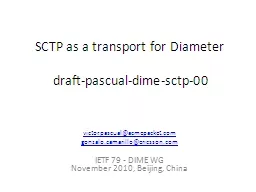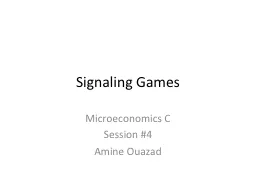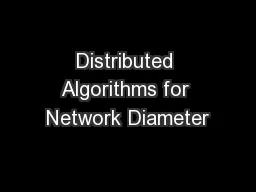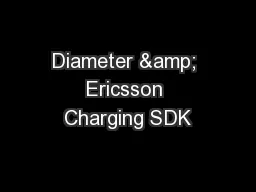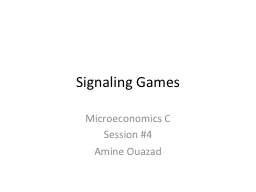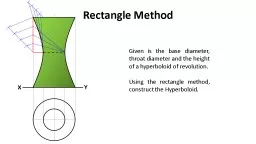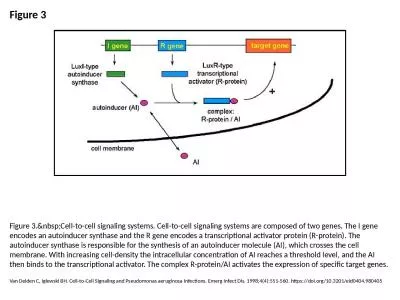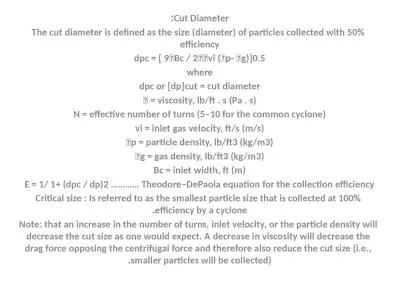PPT-Diameter Group Signaling
Author : natalia-silvester | Published Date : 2018-03-23
Thursday November 07 th 2013 draftietfdimegroupsignaling02 Mark Jones Marco Liebsch Lionel Morand IETF 88 Vancouver Canada Motivations Reduce signaling in those
Presentation Embed Code
Download Presentation
Download Presentation The PPT/PDF document "Diameter Group Signaling" is the property of its rightful owner. Permission is granted to download and print the materials on this website for personal, non-commercial use only, and to display it on your personal computer provided you do not modify the materials and that you retain all copyright notices contained in the materials. By downloading content from our website, you accept the terms of this agreement.
Diameter Group Signaling: Transcript
Download Rules Of Document
"Diameter Group Signaling"The content belongs to its owner. You may download and print it for personal use, without modification, and keep all copyright notices. By downloading, you agree to these terms.
Related Documents

